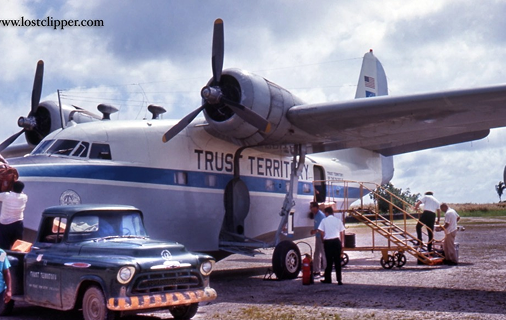
Across Micronesia’s vast blue expanse, three Albatrosses became flying lifelines — delivering medicine, mail, and hope to islands without runways, where their arrival meant the world.
In the mid-1960s, the U.S. Department of the Interior took delivery of three surplus HU-16 Albatrosses for a unique role: stitching together Micronesia's remote islands. With no runways on atolls like Yap, Pohnpei, or Palau, the Albatross became a flying lifeline. Pilots navigated by stars and reef patterns, landing in turquoise lagoons and coral harbors. One pilot later recalled lifting off at sunrise with salt spray glittering on the sea as grateful villagers waved. For many islanders, the arrival of that big white amphibian meant doctors, teachers, and letters from home were finally within reach.
Bridging the Pacific: Trust Territory Airlines flights ran from Guam to Chuuk (Truk) Lagoon, touching down on calm water adjacent to coral airstrips. A radio announcement would summon waiting locals – mothers cradling babies, elders and fishermen alike – to a hastily erected dock. People carried mail, groceries, and livestock aboard; others stepped off into a new world of opportunities.
Delivering hope: The Albatross delivered everything the islands needed: medicine, mail, and even generators. On one mission, a frantic message came from a remote village about a critically ill infant. Without hesitation, the crew diverted to the lagoon; a baby was airlifted aboard and flown straight to a Guam hospital. Villagers told later how they knelt under the wings in prayer as the plane took off, trusting their child's life to its engines.
End of an era: By 1970, new runways on the islands rendered amphibious flights unnecessary. Trust Territory Airlines quietly folded, but for nearly a decade those three Albatrosses were the region's lifeline. Islanders still recall the sight of the big flying boat gliding low on a palm-lined lagoon. Its service proved that amphibious aviation could make one of Earth's most isolated regions a little smaller – a proud legacy that Albatross 2.0 carries forward.
